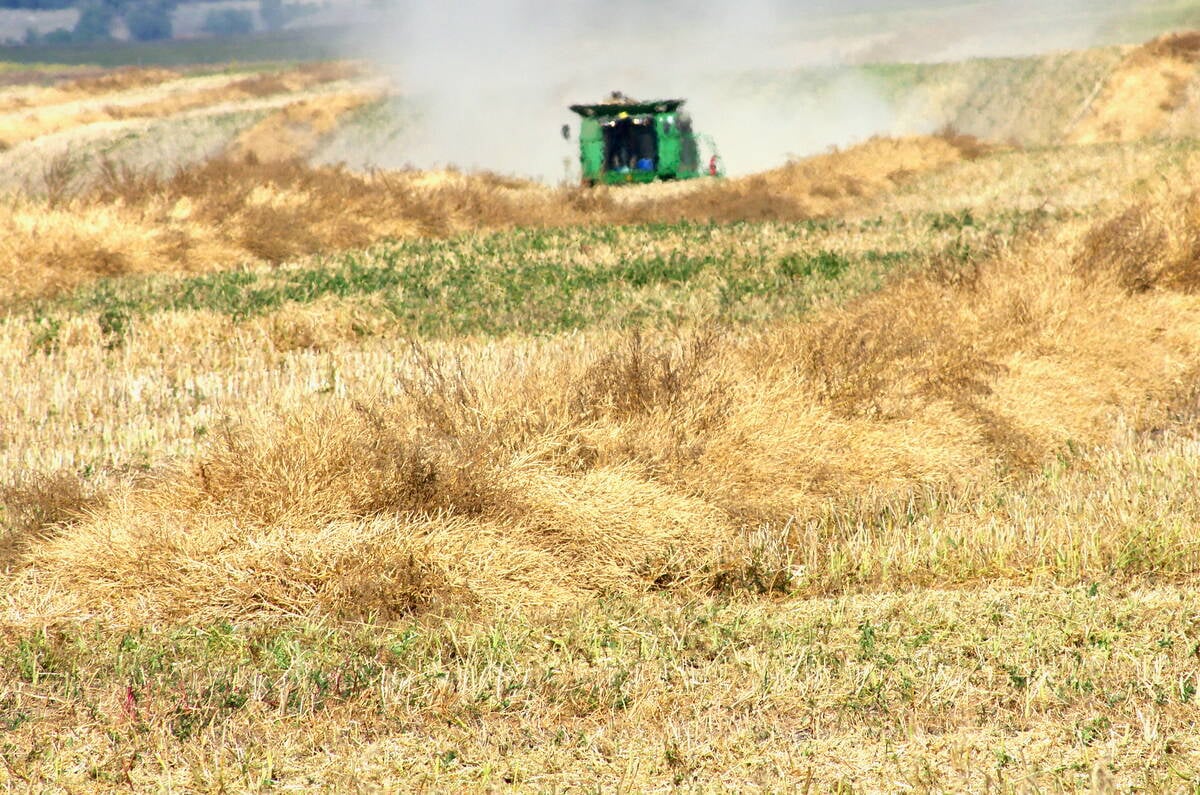Empty containers returning to China represent lost opportunities for western Canadian grain shippers, a conference in Regina heard Feb. 8.
David Fung, first vice-chair of Canadian Manufacturers and Exporters, encouraged the industry to think differently about how grain is shipped.
“There is a new situation happening and let’s examine how we can participate more effectively,” he said in a later interview.
“Forget about hopper cars …. Empty containers are also going to the coast.”
The burgeoning world container trade means more customers are looking for products to travel that way. China is spending $240 billion US to improve its container and transportation systems to move more goods.
Read Also

Manitoba searches for Plan B on canola oil exports
A new report explores Manitoba’s current canola oil trade and possible alternative markets to the U.S.
Fung, who heads ACDEG International, said the trade imbalance between North America and China is what really causes a shortage of containers to prairie shippers such as pulse processors.
Companies need the containers back as soon as possible, but because they have no assurance of return traffic, they build freight costs into the rate for goods moving east from China.
“The freight rate for east-bound containers is a few times higher because the east-bound traffic needs to be moved, so they are the driver,” Fung said.
“That covers the cost of moving (the container) two ways.”
He said the cost of shipping an empty container is 20 percent of a full one. As a result, shipping companies are willing to move empties rather than wait for prairie shippers to load.
“We are not organized ourselves to use these containers effectively,” Fung said.
“How should we make use of these east-bound containers that many small shippers cannot get their hands on?”
He said bulk grain exports are now handled at least six times before arriving at their final destination. Turnaround times are a concern for hopper cars and empty container trains are chasing each other to port.
Sinclair Harrison, president of the Farmer Rail Car Coalition, said he wasn’t scared by Fung’s suggestion that more export grain could be moved in containers.
The FRCC recently concluded 10 years of negotiations to purchase Ottawa’s hopper car fleet.
Harrison asked Fung how quickly hopper cars should be converted to flat deck cars to load containers.
“It’s not going to happen that quick,” he suggested.
Fung replied that he was oversimplifying the issue to make his point. But he said China is starting to realize that if it can receive special crops in containers, it could also receive durum wheat that way.
“We are trying to bring up the concept,” he said.
The grain and transportation industries shouldn’t be worried about buying more hopper cars or building more track.
“Why, when empty containers are begging for cargo?” he said.
Instead, the Prairies should position themselves as a hub of container loading and movement. Preliminary estimates indicate there are more than enough empty containers to move grain exports to the West Coast in the next five to 10 years, Fung said.
“We should become a much more active participant in supplying specialty grains to the Chinese market.”
Containers “telescope” that grain right to the fastest growing economy in the world, he added.
Harrison said the move to containers is a natural progression in the industry and the FRCC will be part of that trend. However, moving grain must make financial sense to farmers and the coalition.
“We’ll go whatever way the system needs,” he said.
“We certainly have to be more nimble than we have in the past.”
There are technical issues to deal with. Grain is heavy and containers probably couldn’t be filled to capacity. Instead, they would need to be partly filled and stabilized.
Harrison said there are other issues, such as the rural road network and how containers could get to and from farms.
“We can’t rebuild the whole Saskatchewan road system to primary weights,” he said.















